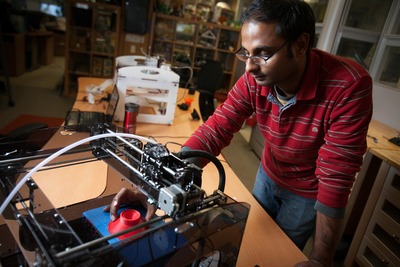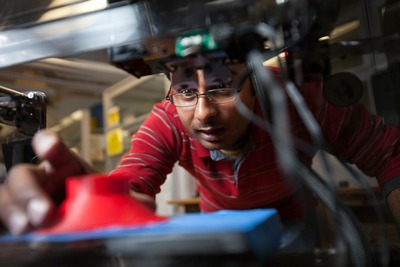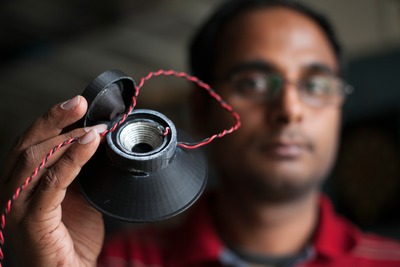3D-printing a loudspeaker
Wednesday, 18 December, 2013
Researchers at Cornell University have demonstrated the first ever consumer electronics item to be 3D-printed - a working loudspeaker. Graduate students Apoorva Kiran and Robert MacCurdy worked on the project with Associate Professor Hod Lipson, a 3D-printing innovator.

Hopson said a loudspeaker is “a very simple electronic device”, which consists of plastic for the housing, a conductive coil and a magnet. “But the challenge is: are these materials mutually compatible?” he asked. Furthermore, can the system be designed so the appropriate materials can be co-fabricated into a functional shape?
Kiran used one of the lab’s Fab@Homes, a customisable research printer that allows scientists to tinker with different cartridges, control software and other parameters. For the conductor, he used a silver ink. For the magnet, he employed the help of graduate student Samanvaya Srivastava to come up with a viscous blend of strontium ferrite.

“Everything is 3D-printed,” said Kiran, who demonstrated the mini loudspeaker by playing a clip from President Barack Obama’s State of the Union speech, which mentioned 3D printing.
Lipson noted that two different printers were required to do two different parts of this print job, as most printers cannot efficiently handle multiple materials and some materials have different requirements. But, he said, “it’s possible to foresee that in the not-so-distant future, you’ll have one printer capable of working with multiple materials, multiple processes, all in one print job”.

He added that the researchers are moving 3D printing away from printing passive parts to printing integrated, active systems. With the loudspeaker being the first example of this, he claims we’ve “only seen the tip of the iceberg of this technology”.
Framework enhances synthetic data for AI training
Researchers have developed a set of metrics to evaluate the affinity and diversity of synthetic...
Layered semiconductor shows potential for memory storage
Researchers have discovered that a unique semiconductor undergoes notable structural changes...
Research breakthrough in data centre interconnects
Researchers have combined nonlinear predistortion and digital resolution enhancement to overcome...




